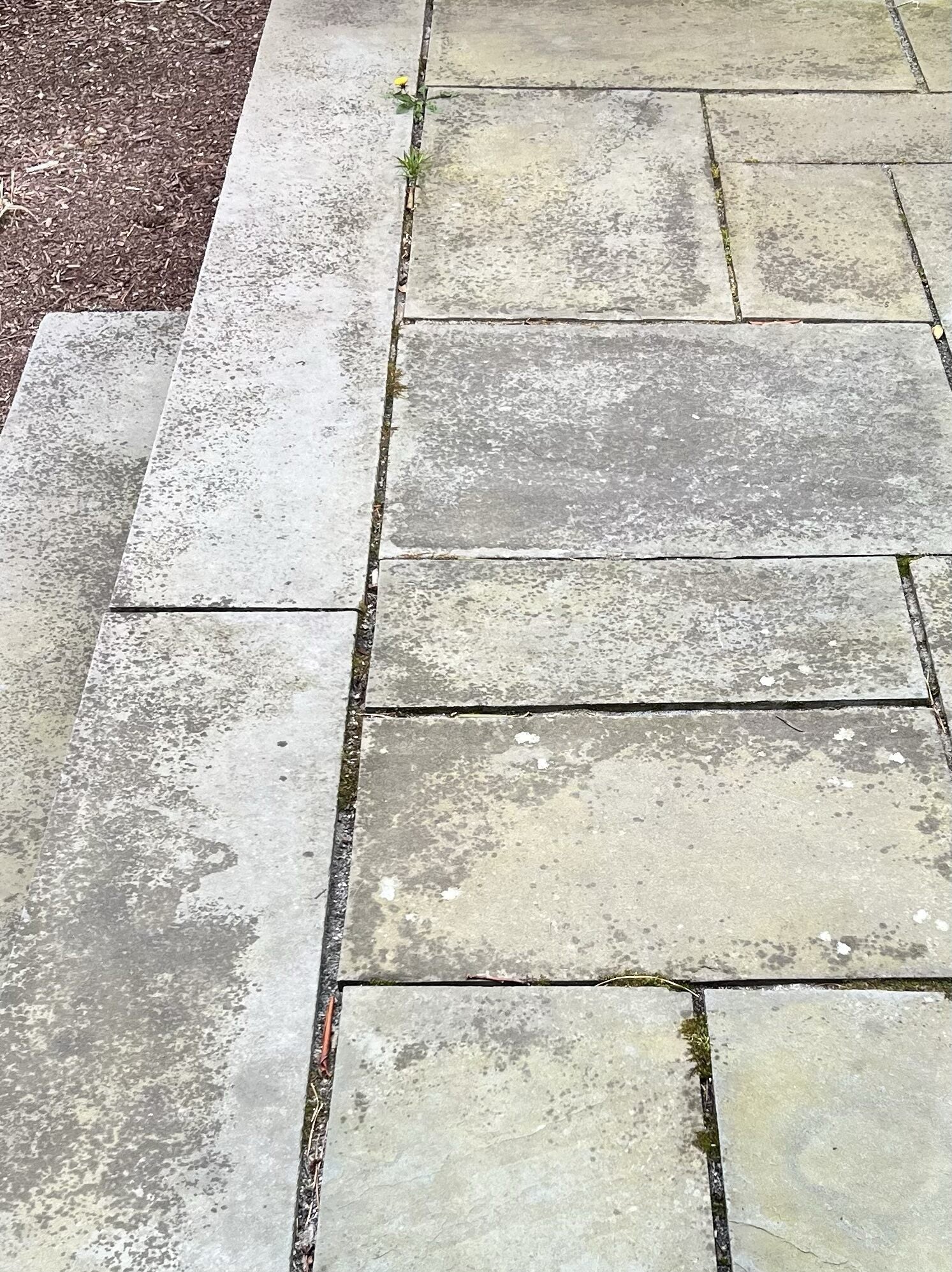Green mould, algae and lichen on Patio
Why does my patio turn green?
Depending on your garden’s layout, which way your property faces and the amount of sun exposure it gets, you’ll will most likely find at some time during the year, it turns green. Is it mildew, green mold, or algae? Commonly known as Green algae, this green slime will grow whenever there is a prolonged period of wet weather. If you’re lucky enough to live in a warm climate, your hard surfaces won’t suffer from the same problem.
Is your Patio or deck slippery?
Organic growth that grows on your patio over the winter months or during wet periods can cause your patio to become slippery. Green algae is the main culprit but over time other organic growth such as black lichen, which we refer to as black spots and white fungi can turn your patio and paths slippery and hazardous. Not idea for the children or elderly relatives. Areas that lack sunshine will suffer more than areas that get more sun.
What is algae?
Algae is a simple, photosynthetic organisms that thrive in moist, sunny environments. They’re typically found in bodies of water, such as ponds, lakes, and oceans, but they can also grow on hard surfaces like decks, patios and fences around your house. Water features can suffer from the same problem.
Remove green mould or green algae from patio
We would recommend Patio Black Spot Preventer for removing green algae. This is a spray and leave treatment that must be applied every 11-12 months. Applying each spring after the wet weather has passed is the perfect time of year for this product to be used. Apply on a dry day when no rain is forecast for 48 hours and leave to dry. Do not wash off. Algae will disappear within 3-5 days.
Alternatively, if your patio needs a complete refresh, we’d recommend Patio Black Spot Remover. This product will remove algae within 15 minutes of application. Restore the natural colour and remove any other organic growth within 2 hours. Ask yourself, does my patio need cleaning? Or, just the algae removing?
Can I pressure wash green algae away?
Yes, but be aware of the consequences. Pressure washing without a patio cleaner that does the work for you, isn’t recommended. When you rely on pressure to clean your stone you risk damaging the stone. Regardless if the stone is natural or just concrete paving slabs. Not to mention, will cause havoc with the pointing or grout in between your patio slabs.
Most concrete paving slabs are manufactured with a finish that makes them look more natural. This finish breaks down over time due to weathering, but constant pressure washing will speed up the process. Sandstone is sedimentary and can also be damaged by constant pressure washing. A light pressure wash shouldn’t cause any problems but we would always recommend applying a patio cleaner first that does the cleaning for you.
Will the green algae grow back?
Many products are sold on the basis that they prevent algae growing. No matter what anybody tells you, green algae will grow back! It’s not possible to prevent green algae growing on a patio. Despite what some sealers promise, they won’t help either! You’ll only find this out by spending time and money, later to discover they’ve had no benefit.
How to prevent green algae from growing?
If you’re having a patio laid, ensuring the correct drainage on your patio is installed is the most effective way to stop algae from growing. When a patio area is designed and laid, the design should ensure water runs off the patio into your garden. Areas that puddle over, will suffer.
Conclusion
Algae on patios is a common issue that can be easily addressed with the right cleaning products. By having an easy-to-use maintenance product on hand to treat the area whenever algae appears will reduce the amount of pressure washing required, potential damage and prevent other forms of organic growth from appearing.


